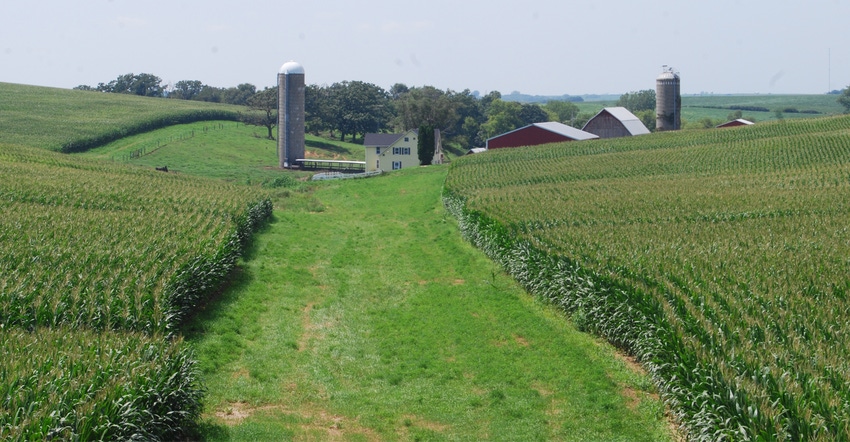June 11, 2018

By Callie Greiner
Preliminary results regarding the 2017 Iowa Farmland Ownership and Tenure Survey were recently released. The study is required by Iowa law and is conducted every five years since the 1980s. The goal of the survey is to provide information regarding land ownership, tenure and transitions across Iowa. This is the first and only consistent data collection of land ownership and tenure in the nation.
Wendong Zhang, ISU assistant professor of economics and Extension economist, led the research effort with an update that includes these preliminary findings:
• 82% of farmland free of debt, 16% with mortgages and 2% under contract
• 60% of farmland owned by people 65 years and older
• 35% of farmland owned by someone 74 and older
• 1% of land owned by people age 25 and under; 5% of farmland owned by people 25 to 44 years
• 49% of farmland owned by women; 13% owned by women over 80
• 55% of farmland leased, with about 80% of land being cash-rented, and 13% under a crop-share rental arrangement
• 65% of farmland owners with fewer than 500 acres; 16% with over 1,000 acres
• 48% of landowners describe tenants as someone else, 30% as relative and 22% as close friend
Most landowners not farming
Among landowners in Iowa, the survey reports that only about 20% of land is farmed by landowners who farm full time, around 20% by owners who farm part time, and 57% of all Iowa land is owned by owners who do not currently farm.
Of the 57% of land owned by nonfarmers, 34% is owned by owners who had no farming experience at all, and the remaining 24% is owned by retired farmers. After identifying who the landowners are, researchers were interested in identifying land ownership type, as well as how the land is being distributed.
To do this, the survey categorized land ownership into eight categories: sole ownership, joint tenancy, partnership (including limited partnership), tenancy in common, estates, trusts, corporations and limited liability companies.
The survey results revealed that ownership has shifted from sole ownership, which was at 40% in 1982 and is currently at 22%, to more trusts, which was at around 1% in 1982 and is currently at 20%. Researchers also noticed an increase in corporations over the past five years, now accounting for about 10% of ownership.
Cash rent dominant leasing arrangement
The survey then categorized the distribution of Iowa farmland acres by tenure into the following categories: owner operated, cash rent lease, crop share lease and other. The results showed that the percent of land controlled by owner operators has increased from 40% to 45% in the last five years. However, this means the majority of Iowa land, 55%, is rented out to others. Among leased farmland, the dominant form is cash rental lease accounting for about 42% of all land in Iowa, while land operated under a crop share lease is only about 13%.
Interestingly, the survey revealed that land primarily owned by female landowners tend to be leased out more than those controlled by men. When putting an ownership and leasing relationship together, the survey showed that the largest portion of owner-operated land is held in joint tendency, and the largest portion of both cash rent and crop share is held in trusts.
80% owned by full-time residents
When examining the percent of land across Iowa residency and leasing relationship, researchers found that although 80% of land is owned by full-time Iowa residents, 7% is owned by part-time residents, and 13% is owned by those who do not live in the state.
Among the 80% of land owned by full-time residents, the majority (53%) is owner-operated. In contrast for the land owned by nonresidents of Iowa, about 73% is being farmed via cash rent and crop share.
Finally, participants were asked: What is your primary reason for owning land? The results revealed that 49% of respondents stated their main reason for owning land is for current income, while 29% stated their primary reason for owning land is because the land had family or sentimental value. Other reasons for owning land are long-term investment, as well as home and recreational purposes.
These are only preliminary results. You can expect the final results of this survey to be revealed via press conference in late June or early July.
Greiner is a summer intern with ISU Extension and Outreach and Wallaces Farmer.
You May Also Like




